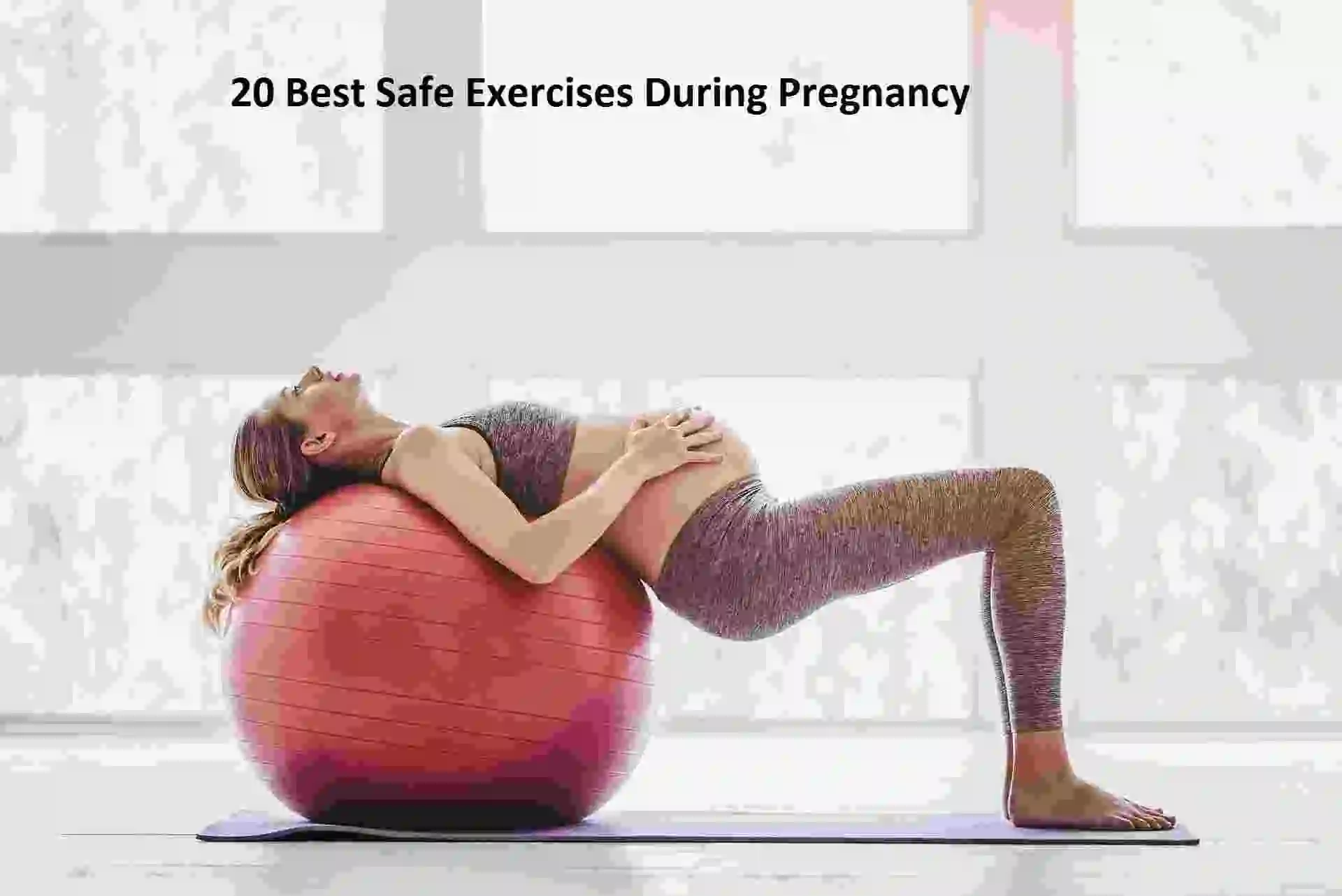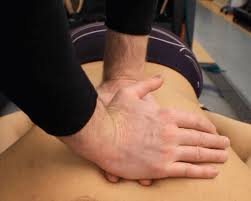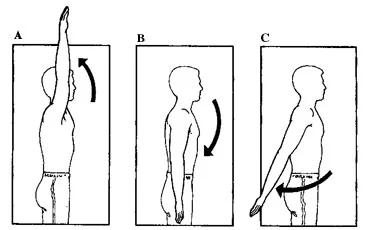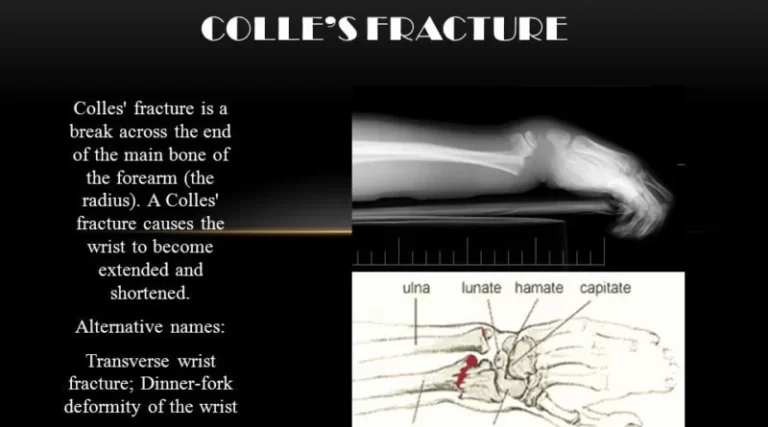20 Best Safe Exercises During Pregnancy
Table of Contents
Introduction
During pregnancy, staying active is important for maintaining overall health and preparing the body for labor. However, it’s crucial to choose exercises that are safe and beneficial for both the mother and baby.
Gentle, low-impact exercises can help improve circulation, alleviate discomfort, and strengthen muscles, while also boosting energy levels and reducing stress.
In this guide, we’ll explore some of the best safe exercises during pregnancy that can be done throughout each trimester, focusing on exercises that support the body’s changing needs while prioritizing safety and comfort.
The following are some guidelines for safe exercise during pregnancy:
- If you weren’t an active person earlier than obtaining pregnant, that’s okay! You can start whenever you choose, but start cautiously and see how you feel to avoid going beyond.
You can continue your usual exercise routine throughout the first trimester if everything feels all right. - It is advised that you continue minimizing the intensity of your workouts in the second and third trimesters and begin to alter high-impact activities and exercises like skipping supine core exercises.
- It is not recommended to exercise for extended amounts of time while supine, or on your back, after the first trimester.
- Extremely hot or muggy conditions should not be used for exercise because it can cause dehydration and other adverse effects.
- Avoid doing excessive abdominal exercises since this could strain the core, mainly the obliques.
Avoid exercises that require forceful actions turns, or twists.
- It may seem like a cliche, but before beginning any new fitness program, speak with your doctor. The rectus abdominis, our core, naturally separates throughout pregnancy to create room for the growing baby, but this separation only occurs after birth, so it is erroneous to check for diastasis recti (DR) during pregnancy. A DR check is something you can do.
- Exercise is not only allowed but highly recommended during pregnancy, according to studies. Pregnant women, personal trainers, and members of the general public maintain misconceptions and biases approximately physical activity during pregnancy.
- One of the things that pregnant women are most anxious about involves performing core strengthening exercises.
- Some people could be concerned about hurting the fetus or the pregnant woman’s abdominal muscles.
- The misconception that the core is useless during pregnancy may even lead some people to decide to ignore it entirely.
- Because of this, many women are afraid to correctly or usefully develop their abs. This is a significant “miss” in terms of activity during pregnancy.
- Let’s define “core” before we continue. There is much more to our abdominal muscles than just a “six-pack.” Your core can be thought of as a multidirectional, cylindrical, three-dimensional muscle unit.
- These muscles, which include the rectus abdominus, oblique muscles, transverse abdominus, and erector spinae, are situated at the top and bottom of the diaphragm’s and pelvic floor’s cylinders, respectively.
- Maintaining a neutral spine during the forward shifting of weight that happens as the baby grows depends on how strong a pregnant woman’s core muscles are. This aids in lessening fatigue and painful muscles.
- The weight of the developing baby may force the pelvis forward due to weak trunk muscles, causing lordosis, or a sway back. This prolonged posture may result in an extremely painful spinal misalignment.
Cardio For All Three Periods
During all three trimesters of pregnancy, cardiovascular exercises like walking, swimming, jogging, and indoor cycling are highly advised.
While your doctor has directed you to change your physical activity, the U.S. Department of Health and Human Services Physical Activity Guidelines for Americans propose that you take part in at least 150 minutes of moderate-intensity aerobic activity per week.
If you’re used to performing high-intensity activities like running, or if your fitness level permits it, you can continue doing that throughout pregnancy.
23 Best Safe Exercises During Pregnancy
The following list includes the best safe workouts and effective prenatal core exercises.
Make sure the abdomen is engaged as the first step in any pregnant exercise program to build core strength.
Sitting knee lift
I advise using a chair, an exercise ball, or the upper portion of your couch.
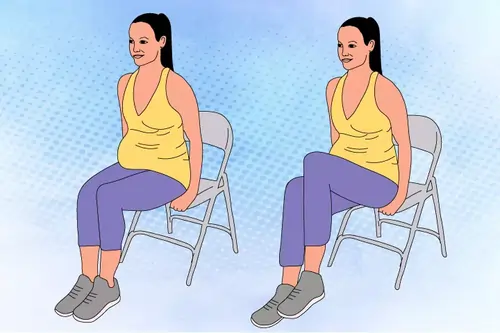
Steps To Follow:
- Take a position near the chair’s tip.
- Take care that your feet are level with your knees.
- Slowly contract your abdomen after bending your left knee to tilt your pelvis and activate your pelvic floor.
- Following that, while you release your breath, carefully raise your left knee to your chest.
- Lower your left foot to the floor to get restored to your starting posture after taking a breath.
- Continue with your right leg.
Note: I recommend doing eight to twelve repetitions in two or three sets. During the first trimester, you can also apply little weights (2 to 5 pounds) on each ankle.
Side-Lying Crunch
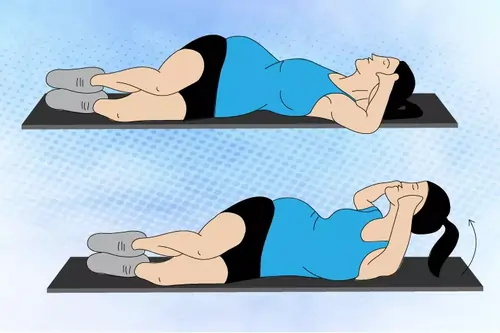
Steps To Follow:
- On the ground, lie down.
- Your knees should rise a little over six inches off of the floor as you shift your torso to the right.
- Make sure your weight is resting on the shoulder blade and the upper part of your left shoulder.
- Avoid straining your neck by placing both hands behind your head so that the fingers touch.
- Raise your torso till it almost touches your right knee, assuming a diagonal curve.
- Raise as high as you can.
- Your left shoulder will raise slightly off the floor as you complete the previously described exercises.
- With your hands around your head, fall yourself to your starting position.
- Repeat with the other side.
Note: Perform 10–12 repetitions on each side for two sets.
Core Breathing

Steps To Follow:
- As long as you hold your straight back, you can stand or sit easily.
- Inhale deeply for five to ten counts, or until your rib cage expands.
- After exhaling for five to ten counts, bring your ribs back to their closed position.
- Repeat ten cycles of deep breathing.
Seated Ball Stability Hold
Sitting on an exercise ball, it’s identical to a ground version of a bird dog.
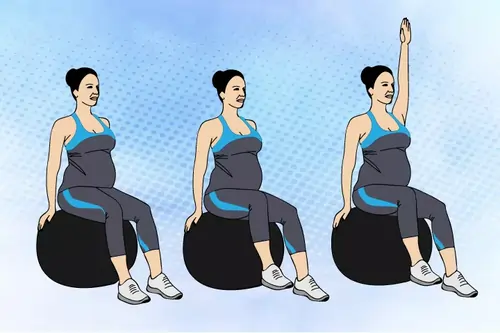
Steps To Follow:
- Prop yourself up on a stability ball.
- Keeping your hands on both sides of your body will help you maintain balance.
- Lift your right foot off the floor while you raise your left arm above your head and inhale deeply from your center.
- Keep going with your opposite arm and other foot.
Side plank/Modified side plank
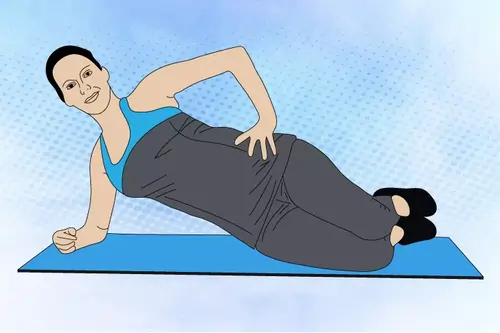
Steps To Follow:
- With one knee straight, one bent, or straight out if comfortable, stack the knees on top of one another without tightening.
- Keep your spine neutral position keep your back straight and concentrate on your core breathing.
- Breathe continuously and you hold this position for 20 to 30 seconds.
- Continue to the other side.
The standing crunch
This is similar to a crunch you would do when lying down and can be done in all phases.
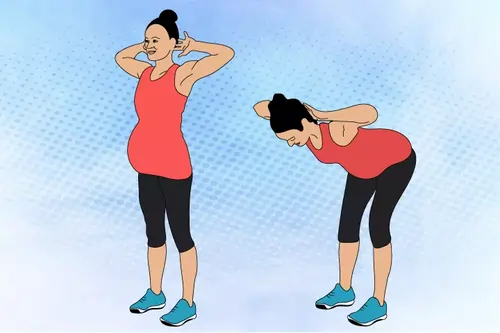
Steps To Follow:
- Maintain a straight posture with your hands behind your head, knees slightly bent, and feet hip-distance apart.
- Take a breath.
- Exhale and stoop forward, stretching your abdominal muscles like you would if you were lying on your back.
- Aim for 15–20 repetitions.
The Standing Bicycle
This is an excellent method for strengthening your core and to improve your balance.
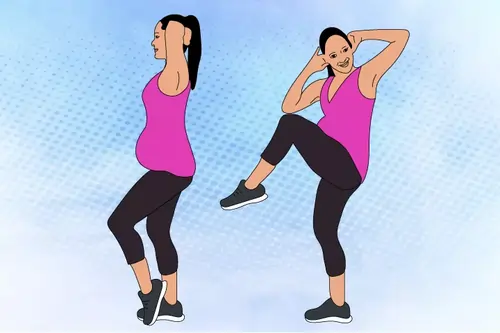
Steps To Follow:
- Holding your hands toward your head and your feet approximately equal distance apart, take a deep breath.
- Then release the breath.
- While you’re standing again, continue with your left foot and right elbow.
- Aim for ten to twenty reps.
Kegels
The pubococcygeal (PC) muscle, which controls urine flow, supports your growing child, prevents hemorrhoids, keeps the vaginal muscles controlled, and assists in childbirth easier, can be toned with Kegel exercises.
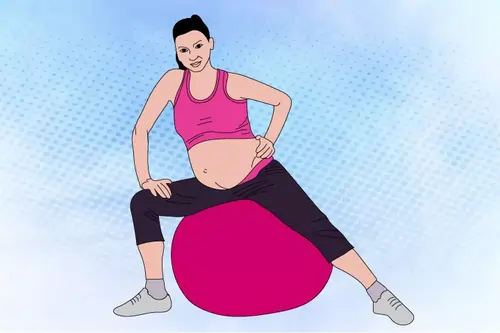
Steps To Follow:
- Sitting comfortably on the exercise ball takes a deep inhalation.
- When you have inhaled enough, exhale softly to expel the air.
- Keep predicting the duration of your five to ten-count inhale and exhale.
- The next time you breathe, try to tighten your vaginal muscles. When you have to hold back when you want to urinate, it should feel like your muscles tensing up.
- At this point, only your pelvic floor muscles should feel tight and rigid.
- Carefully release the pose after maintaining it for five to eight counts.
- Try to do this 20 times a day, and then gradually up the frequency.
Scissor Kicks
Perform simply the first period working up your abs. Even if you feel comfortable doing it in the following trimester, it is advisable to avoid it.
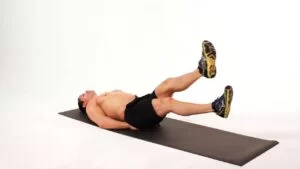
Steps To Follow:
- Maintain your hands flat against your hips as you relax on your abdomen.
- As much as you can, maintain your back flat on the surface of the floor.
- Slowly elevate one leg ten inches or so above the ground.
- Do three sets of ten scissor kicks. After every repetition, take a little rest.
Bird Dog
Strength and stability in every dimension without the need for equipment
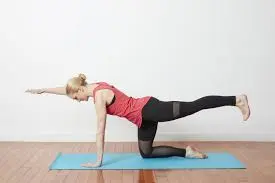
Steps To Follow:
- Get down on your hands and knees.
- Tension your abs.
- Thrust one arm forward as the other leg swings backward
- Sustain the position for 8 to 10 seconds before moving to your opposite side.
Prone Plank Variations
Increasing three-dimensional stability without the use of tools
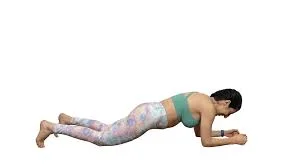
Steps To Follow:
- when trying to start a prone plank.
- Start on your hands and knees, or perform a forearm plank if you have wrist difficulties.
- Tension your abs.
- For 15 to 30 seconds, hold.
- Then let go and do it again.
Note: For a more difficult one, stand for the same amount of time.
Squat
It may not be well known, but when done correctly, this is a great ab workout that can help prepare you for the pushing stage of childbirth.
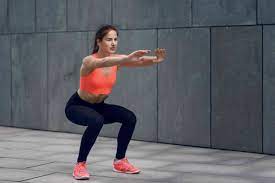
Steps To Follow:
- Maintain a straight posture by keeping your hips and feet apart.
- As you crouch down, take a deep breath to keep your weight in your heels and your knees from giving out.
- Hold your breath until you reach the bottom, and then exhale as you rise.
- Think about doing two or three sets of fifteen reps each.
Cat cow pose
This strengthens your core muscles and increases the flexibility of your back and spine.
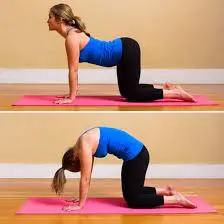
Steps To Follow:
- Position your knees beneath your hips and your hands exactly beneath your shoulders to form a tabletop position on the floor.
- lift your head, let your back go down, and swing your abdomen.
- As you repeat this inhaling and exhalation exercise, try to align as much of your breathing rhythm with your movements as you can.
- Repeat for two minutes or so, then stop and begin again.
Side-lying leg lifts
This strengthens your core, glute, and hip muscles.
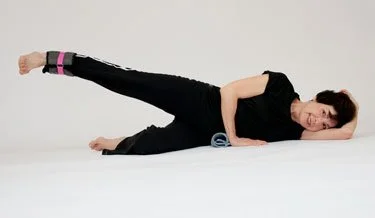
Steps To Follow:
- Lying on your left side, arrange your legs in a pile on top of one another.
- Keep your left elbow firmly planted on the ground so that it can support your upper body.
- Lift it as high as you can manage.
- Lower it over your left leg until it is about two inches high.
- Until your legs start to weary, perform around 20 repetitions on each leg.
Bird Dog Crunches
This workout strengthens the abdominal muscles and increases stability.
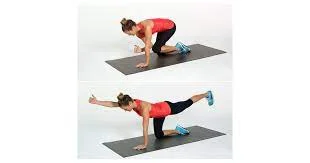
Steps To Follow:
- To start in a tabletop posture, place your wrists just beneath your shoulders, your legs beneath your hips, and your back straight.
- Keeping your core tight, raise your left leg and extend it straight back to you. Following that, extend your right arm straight up in opposition to you.
- Bring the left knee to the center of the right elbow after exhaling.
- Repeat ten to twelve times after taking a breath in and out.
- Following that, use a different hand and leg for doing the same actions.
Standing pelvic tilt
It’s an excellent method of improving your posture while improving the abdomen and back muscles.

Steps To Follow:
- Place your back and hips up against a wall so that you are directly against it.
- Your lower back and the wall will be separated by a very small space.
- Your lower limbs Your lower back should feel that it is pressing against the wall.
- This stance should be completed ten times.
- Release it after maintaining it for about five seconds.
Hip hiker
It helps to build stronger glute and hip muscles.
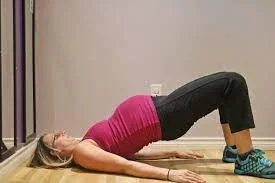
Steps To Follow:
- Position yourself comfortably on your side.
- Bend your lower leg while maintaining a straight upper leg.
- Your upper leg should now be raised two to four inches above the ground.
- Keep your leg straight. Using the muscles on the side of your abdomen, pull your hip.
- Hold the position for approximately five seconds.
- Repeat the steps ten times.
Single Heel Drop
This exercise strengthens the glute muscles.
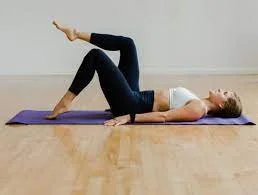
Steps To Follow:
- Bend your knees to a 90-degree angle.
- Straighten one leg while keeping the other at a 90-degree angle.
- Lower your straightened leg and tighten your abdominal muscles.
- Fold it back instantly as it touches the ground.
- Repeat the step with the other leg.
Heel slides

Steps To Follow:
- Start by standing on the ground in the glute bridge position.
- One of your legs at a time, raise your heel just just a touch off the floor.
- Slowly return to your starting location.
- Repeat on the opposite leg.
Leg Raises
A great technique for strengthening your back and abdominal muscles is to perform leg lifts.
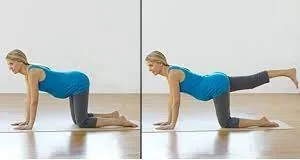
- Check that your arms are as long as possible.
- Straighten out the right side of your knee by elevating it off the ground.
- Try to maintain your right leg parallel to the floor while it is raised.
- Raise your left knee over it is equal to the floor and raise straight back.
- To progressively raise the intensity, repeat the pattern on both sides.
- Ten repetitions on both sides should be your target.
Benefits Of Exercising During Pregnancy
If your sole reason for exercising is to fit into a smaller pair of clothing, you might need to reconsider your objectives and perspective in light of the changes you expect.
According to the American College of Obstetricians and Gynecologists, exercising while pregnant may lower the risk of:
- Premature delivery,
- Cesarean delivery,
- Major weight gain
- Reduced birth weight due to gestational diabetes
- Hypertension conditions like preeclampsia
It’s also a powerful approach for:
- keep up your physical health
- Decrease low back ache (hey, expanding belly!)
- Control your anxiety and depression
- Reduce tension
- Improve the healing process after childbirth
Some exercises can be performed at the start of each month to help the body respond to its physical changes and prepare for a more straightforward return to action after giving birth.
Concentrating on awareness of your pelvic floor and core can help you build a deeper connection with your core before the real changes occur.
12 Week Complete Pregnancy Workout Guide
In addition to providing a 12-week regimen of moderate-to-low-impact exercises that can be performed repeatedly during each stage of pregnancy, The Complete Pregnancy Workout Guide also includes advice on nutrition, exercises to help maintain a strong pelvic floor and core, labor and delivery preparation tips, and more!
You will initially focus on laying a solid foundation to tone your muscles, increase circulation, and develop endurance. As the weeks pass, you will want to strengthen and stabilize yourself while reducing pregnancy aches and discomfort. By leading an active lifestyle, you may prepare for childbirth, lower stress levels, and build resilience and strength.
Weekly activities include resistance and strength training, yoga, and active recuperation. Active rehabilitation includes prenatal yoga and core exercises to get your body ready for delivery and the arrival of your wonderful child or children!
- When to Start Working Out While Expectant
The best time to start prenatal exercises is as soon as you learn you are pregnant. - The second-best time to start exercising during pregnancy is right now. Of course, get the all-clear from your midwife, OB-GYN, or doctor before beginning any pregnancy exercises.
- This 12-week program includes safe pregnancy workouts that you can do at home or anywhere else!
- Equipment requirements include dumbbells and a loop band.
Conclusion
Both the mother and the fetus benefit from an active lifestyle throughout pregnancy. A strong core, well-defined muscles, and a healthy cardiovascular system can all be maintained by exercising most days of the week. Additionally, it improves your emotional well-being.
If you feel any pain or discomfort, listen to your body’s cues and stop. As always, see your doctor if you have any questions or concerns about how your body is responding to an exercise program.
FAQs
When pregnant, which physical activities are best avoided?
hard substances or hitting implements, such as in hockey, cricket, or softball. great balance, coordination, and agility—similar to gymnastics. significant changes in pressure, such as those that occur during SCUBA diving.
What kinds of physical activity are safe for taking part in while pregnant?
Walking.
Exercises in the water and swimming.
cycling in a stationary position.
Pilates and yoga courses.
Low-impact aerobics classes When performing low-impact aerobics, you always set one foot on the ground or the equipment.
Strengthening exercises.
Can I still do planks if I’m pregnant?
Yes, most pregnant women can use planks without risk. Because they strengthen the back and the core, planks and other static, endurance-based exercises are excellent for women who are pregnant. Additionally, they put less strain on the spine than dynamic workouts like crunches.
Can I run when I’m pregnant?
Yes. It’s commonly believed that running while pregnant is safe for both you and the fetus. However, some women should not exercise at all due to pregnancy-related problems or health concerns.
References
- Lagudu, S. (2024, January 10). 22 Safe & Effective Abdominal (Ab) Exercises During Pregnancy. MomJunction. https://www.momjunction.com/articles/abdominal-exercises-during-pregnancy_00366835/
- Lindberg, S. (2020, April 30). The Best Pregnancy-Safe Exercises at Home and the Gym. Healthline. https://www.healthline.com/health/pregnancy/pregnancy-workouts#benefits

